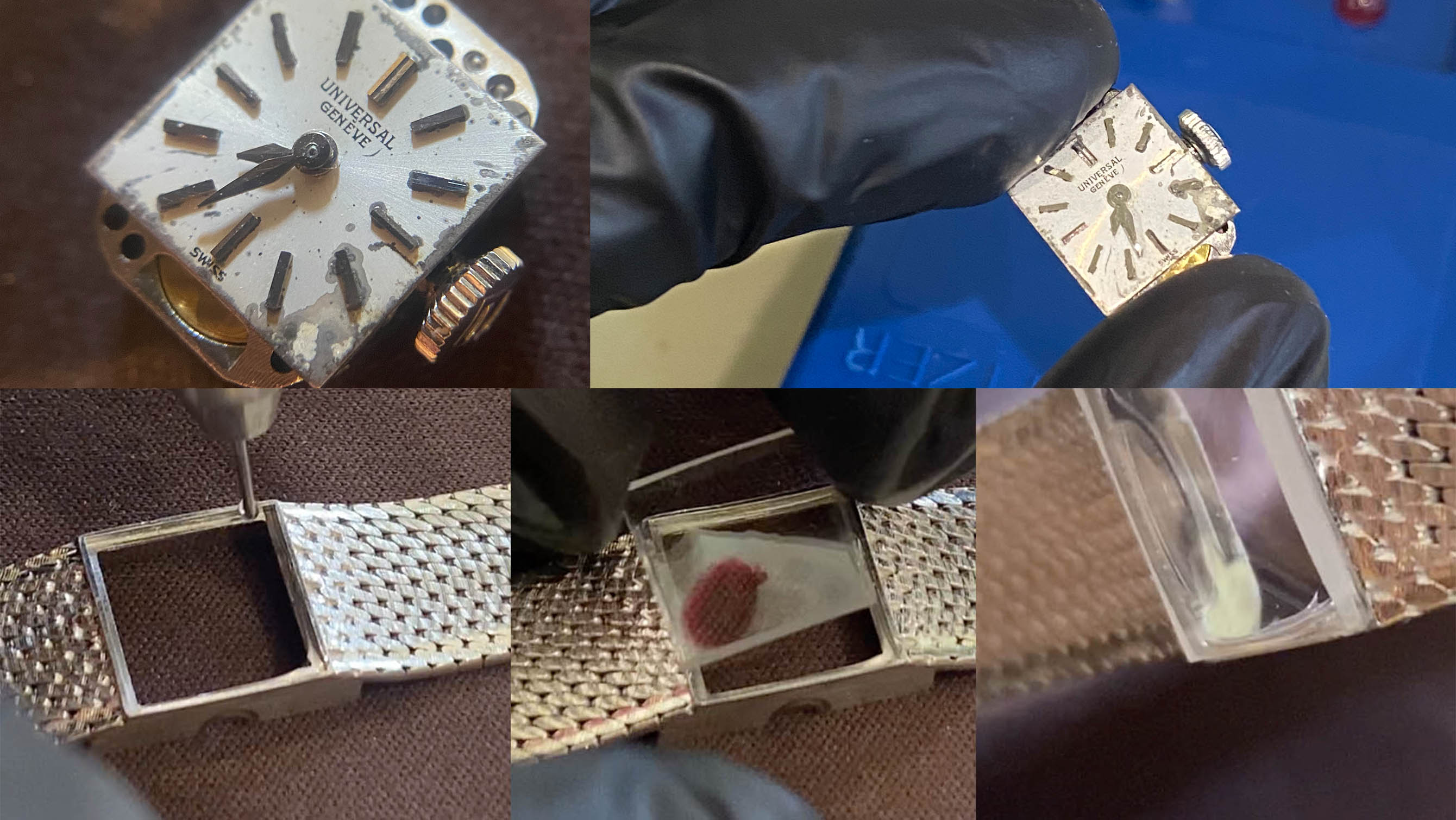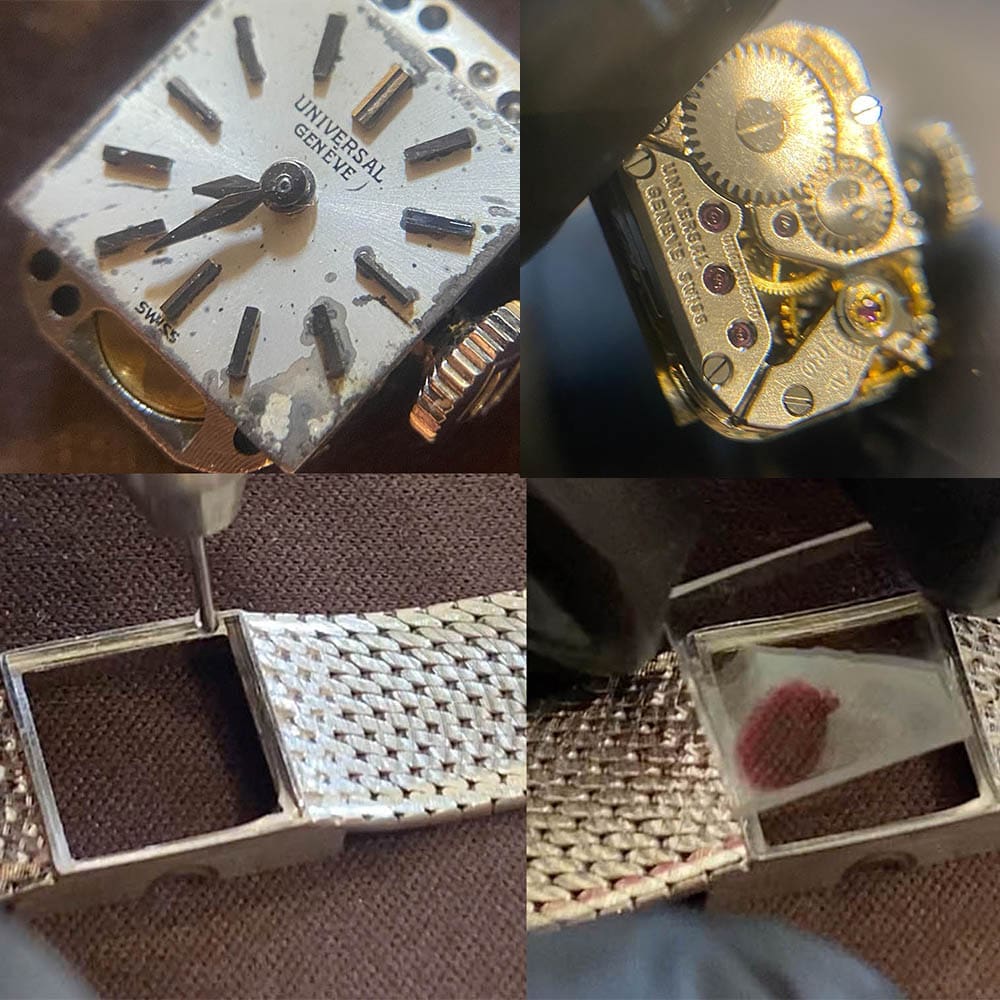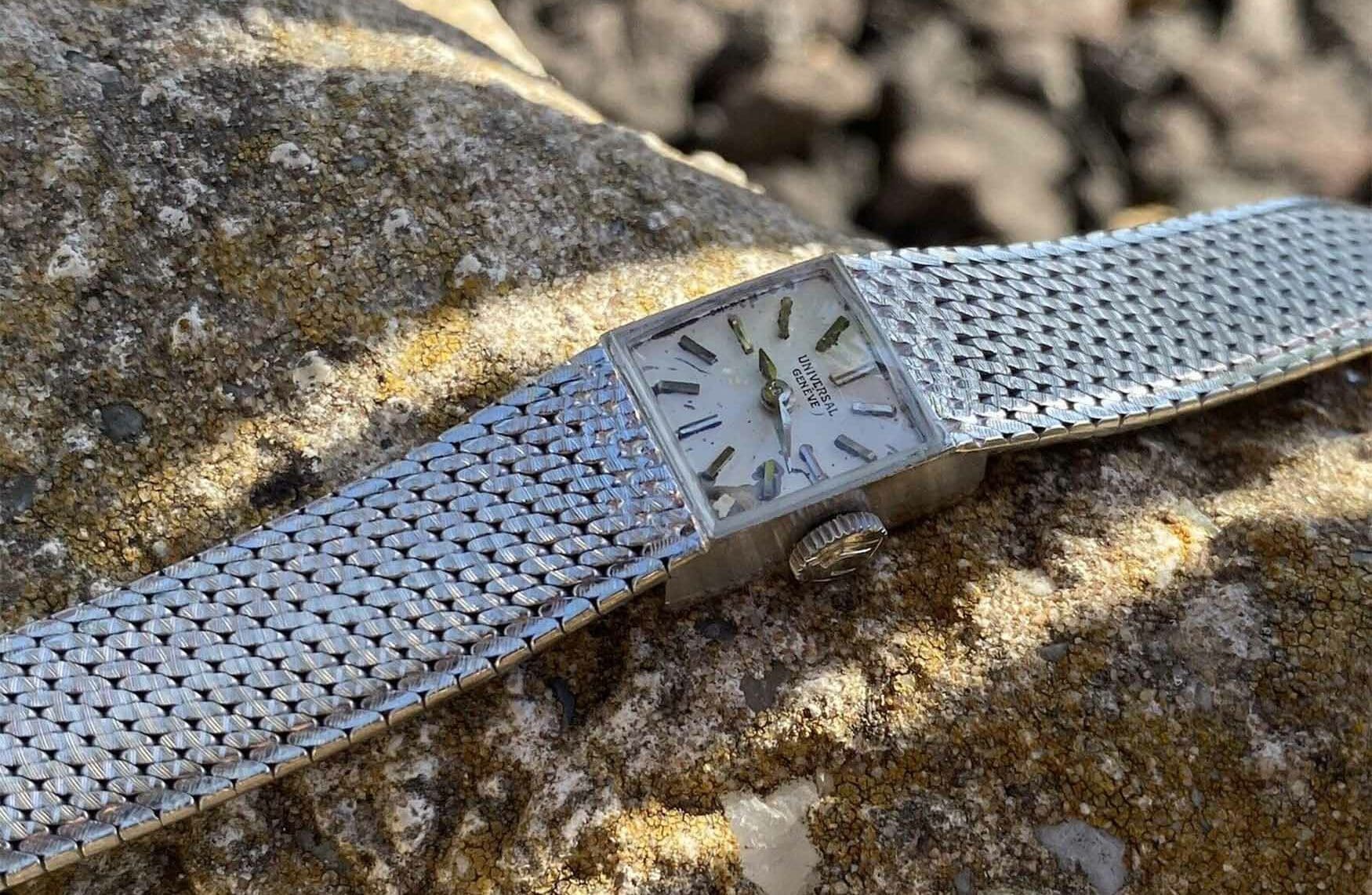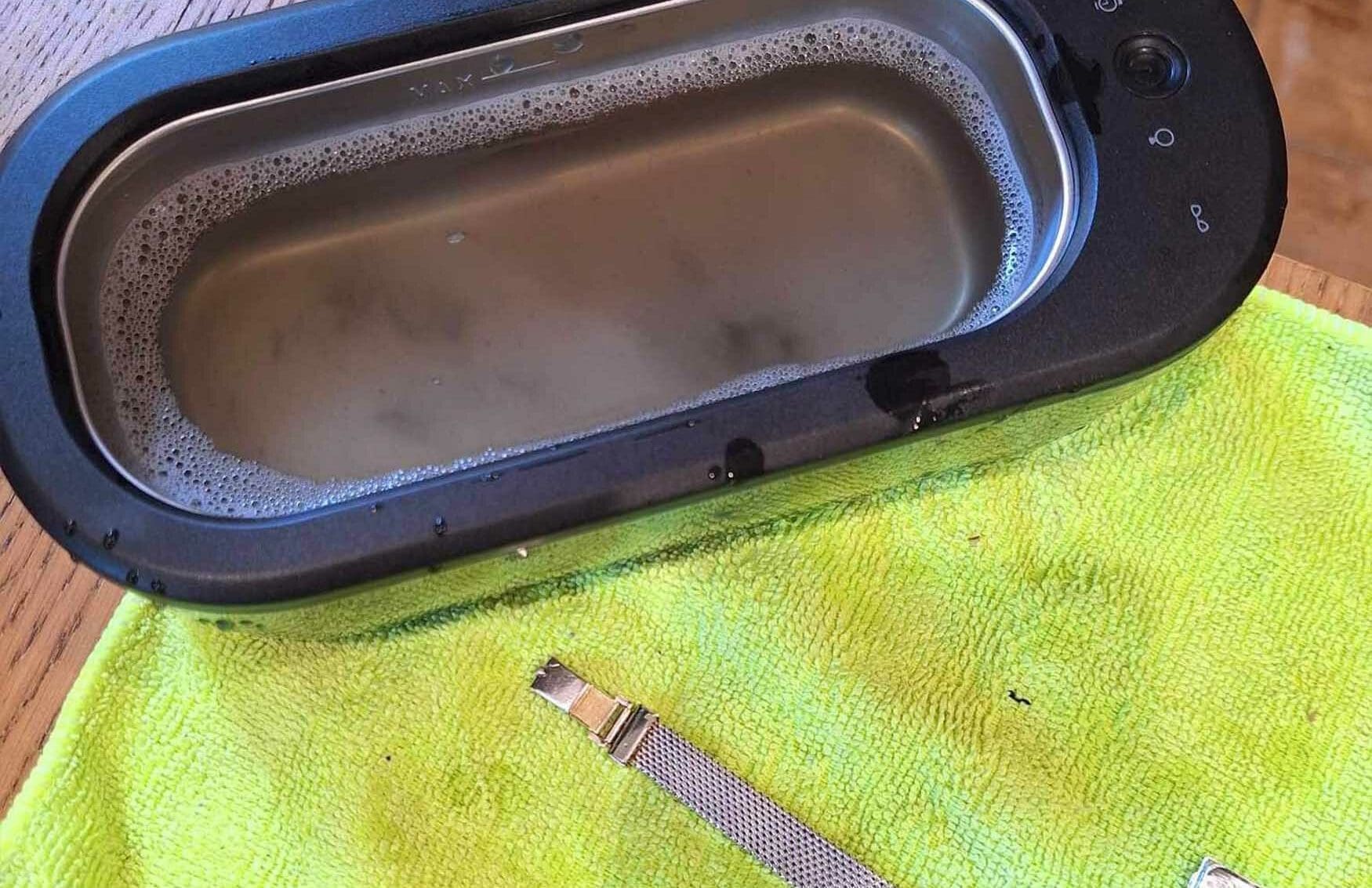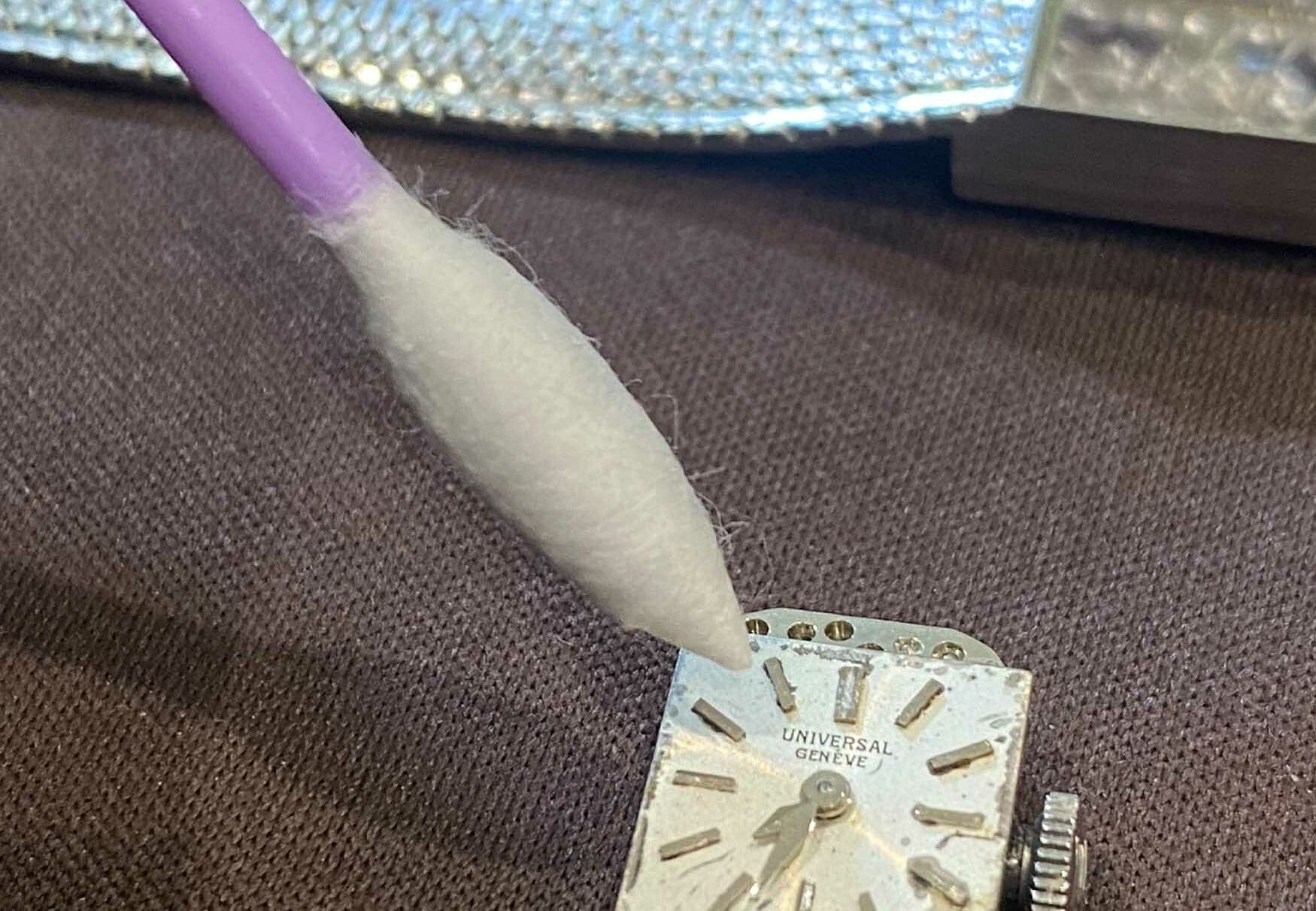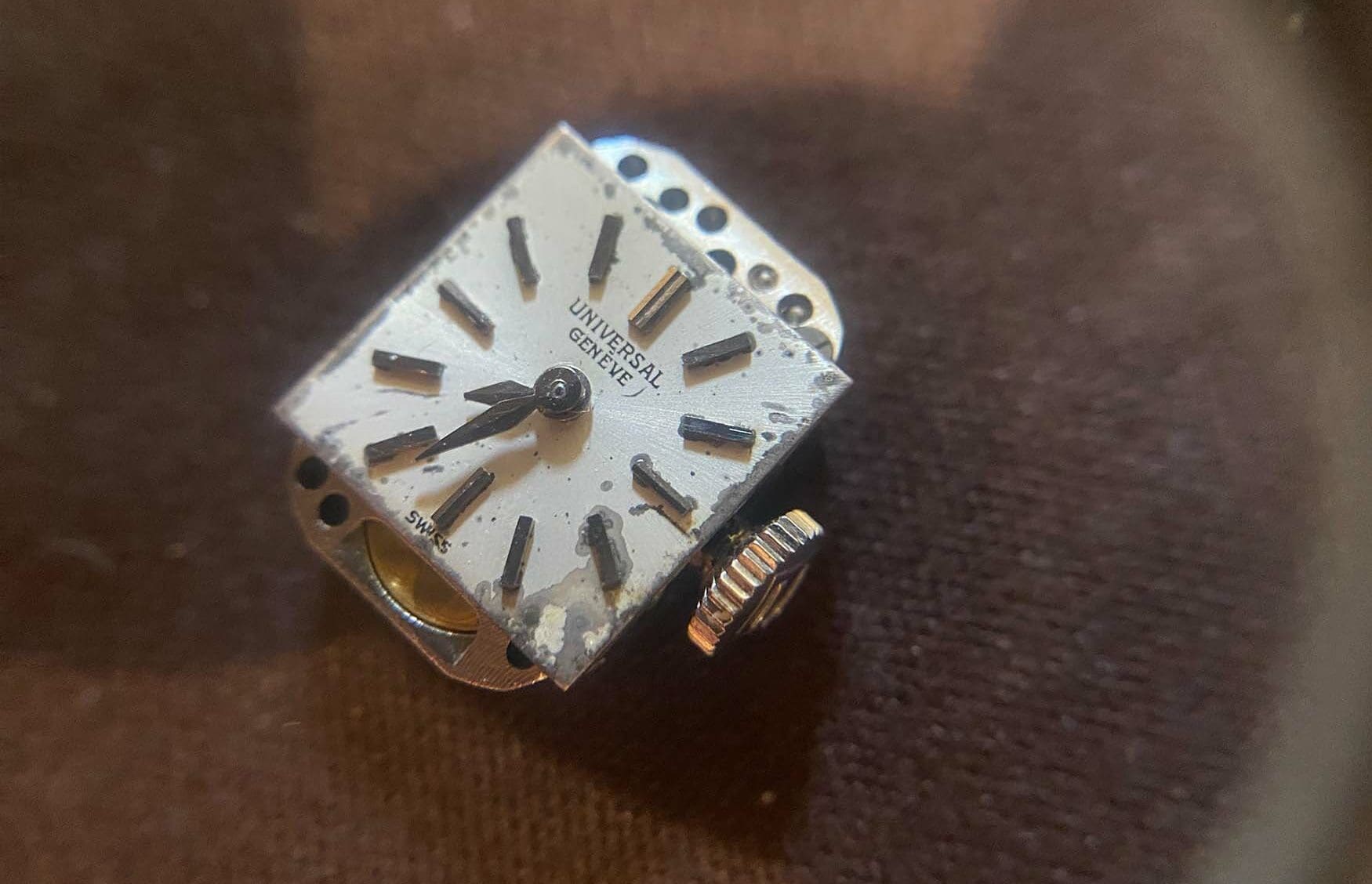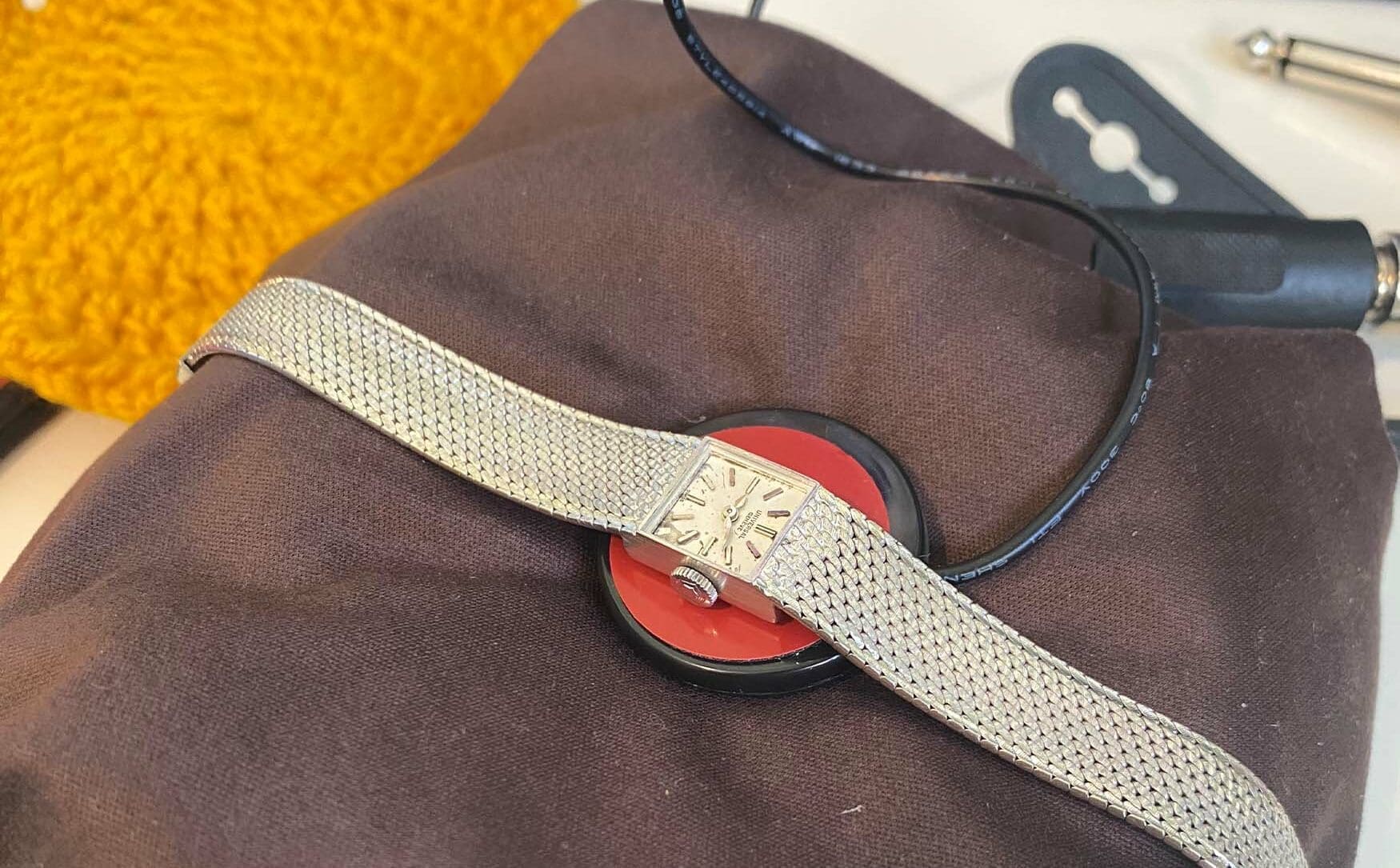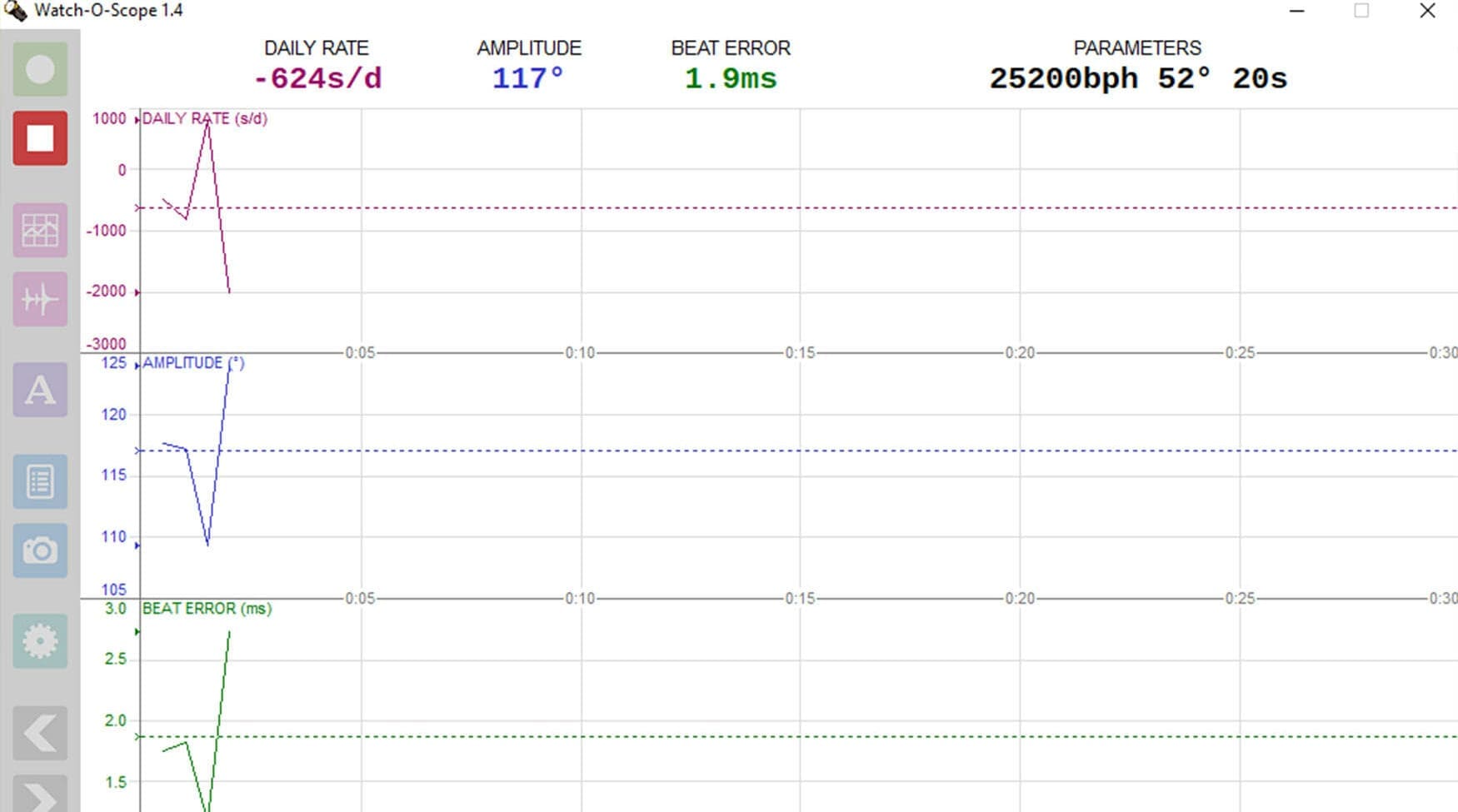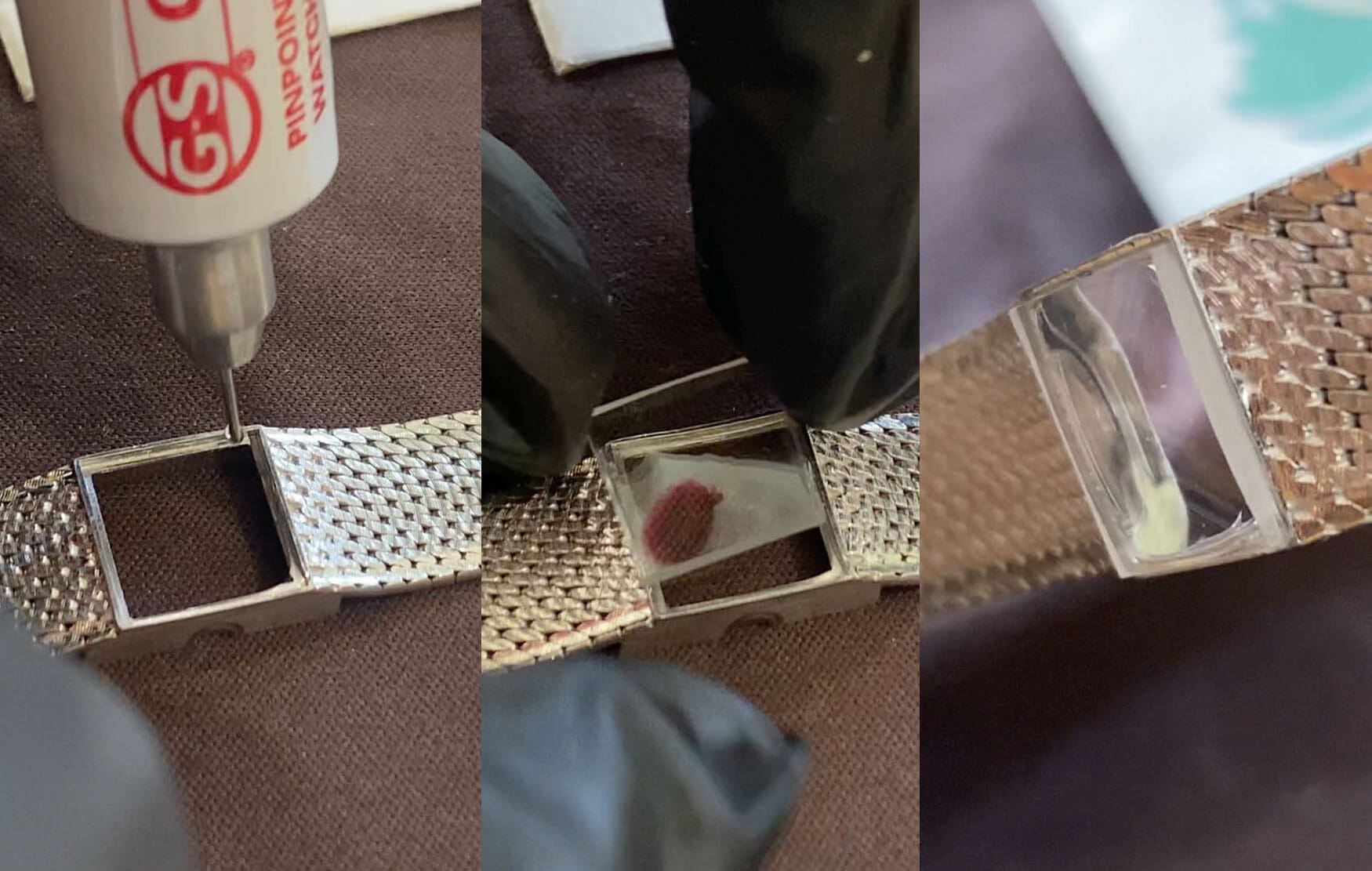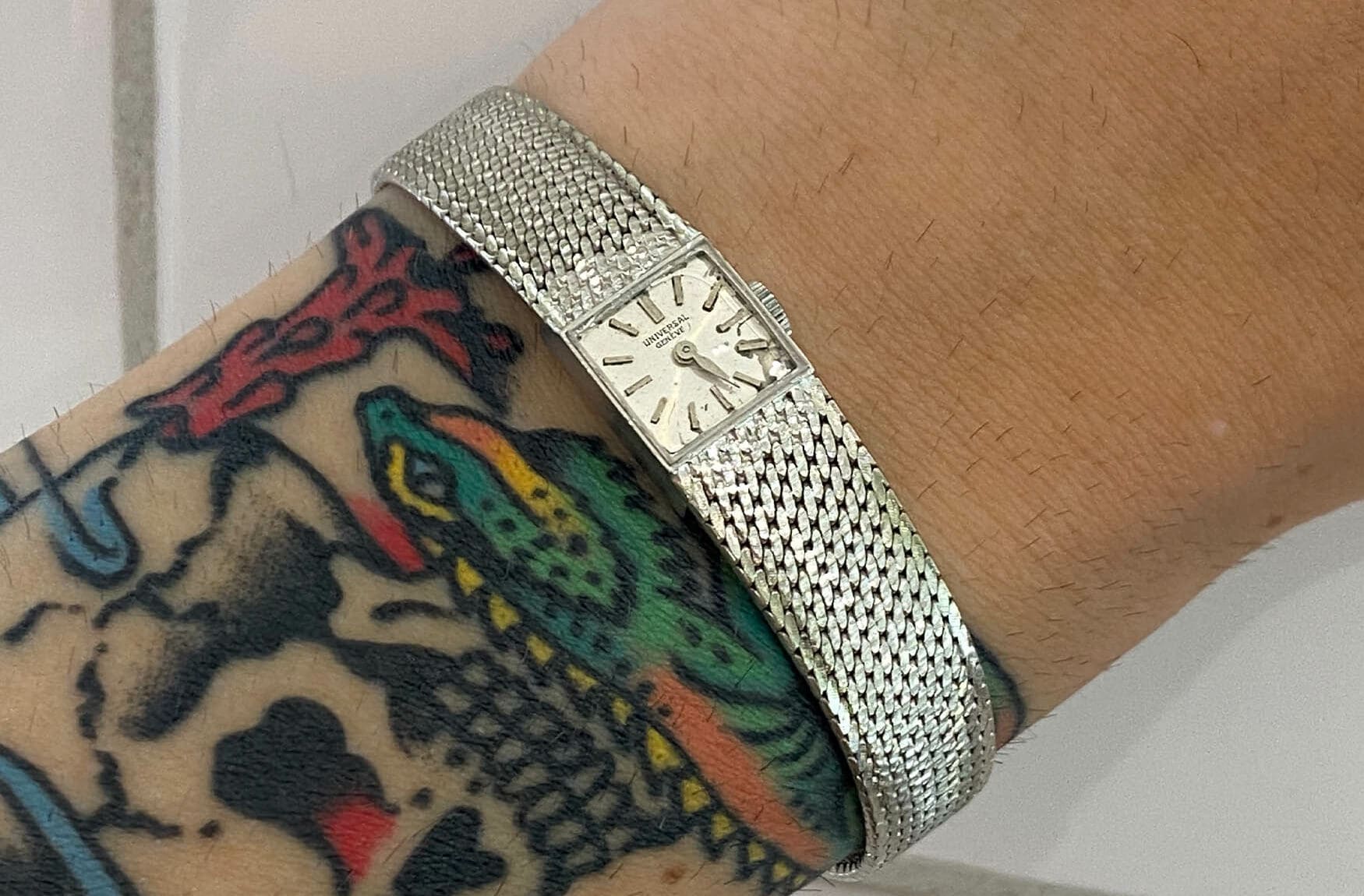My DIY restoration of a solid gold Universal Genève that cost $7
Buffy AcaciaIf you haven’t read my first story about this watch, here’s the gist. I went to an op shop, rummaged through a box of junk, and stumbled across a Universal Genève for A$6.99. Once I took it home, I discovered that it was made from solid 18k white gold, and even got it XRF tested by a jeweller because it felt too good to be true. Well, I had to toss up between heading down to my local pawn shop to sell it for scrap value, waiting months and months to sell it online, or trying to fix it up myself while spending as little money as possible. It may not have been the sanest choice, but now you’re reading this article, and here we are. Let’s get into it.
The first and most glaring problem with the watch was the lack of a crystal. Being from the 1950s, it probably would have needed a new crystal even if the original was still there. Watches of this style are thankfully incredibly simple in construction. The movement slips into the caseback, which clips into the case, and the glass just sits on top of a tiny milled ledge with no need for rubber gaskets or bezels. All I needed was some precision adhesive and the crystal itself, which I guessed was going to be tough to find. I needed an 11mm x 11mm double-domed crystal with a flat base, preferably acrylic for ease of polishing. I could see that the hands of the watch stuck up above the crystal ledge in the case, so that’s why I needed it to be double-domed.
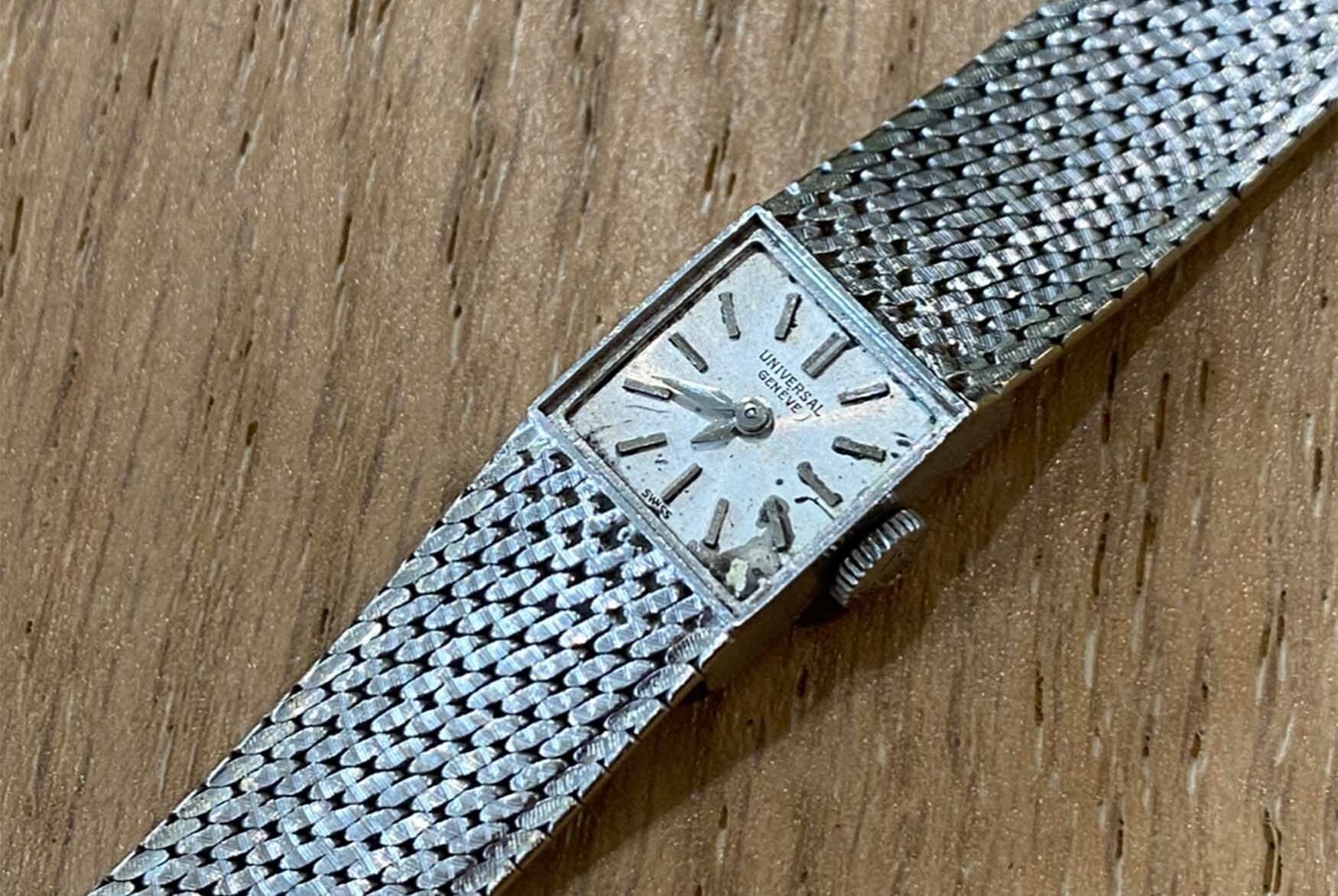
It was a weekend when I started browsing the web for suitable crystals, and although I knew it would be difficult I didn’t realise just how barren it would be. There was nothing even remotely close to what I needed from professional watch part supply stores, and it looked like my only option was to buy the only one on eBay from a French seller with extortionate shipping costs. But, I decided to wait until Monday so I could call up the two Australian suppliers and ask for help directly. The first one gave me a prompt no, but the second asked me to wait a few minutes while they checked around their stock. Ten minutes later I got a call back, and to my amazement they’d found the perfect fit. I paid A$5 for the crystal plus express shipping, and also bought some G-S Hypo Cement to glue it down. While waiting for them to arrive, I went ahead with other small tasks.
While it’s amazing to have found such a special watch for such a low price in a second hand store, I will of course admit that the watch isn’t in pristine condition. The case has plenty of scratches, the dial was filthy and corroded, and the bracelet didn’t really have any sparkle. I realised that this was the perfect excuse to buy an ultrasonic cleaner, which I’ve wanted for at least five years. To my delight, I realised they’d gotten much cheaper than when I’d originally heard about them, and picked one up for A$50. After putting the case in, I’m not sure if the cleanliness of the bracelet or the filthiness of the water shocked me more. I knew that there’d be some amount of grime in there, but just look at how disgusting that water looks. On the plus side, the bracelet looked brand new! For the first time I felt like I could actually see the difference in lustre between white gold and stainless steel, and the way its edges sparkle like diamonds is absolutely unreal. I’ve always been slightly critical of white gold in the past, but now I know you have to give it some complex finishing to truly let it shine.
The unfortunate downside of cleaning the case and bracelet was that the dial looked so much duller by comparison. I can already feel hundreds of people cringing as they realise what I’m about to admit, but I knew I wanted to clean the dial. Listen, I am totally one for preserving history as authentically as possible. I love patina and grime as much as a pirate cosplayer, but I knew that the original vision behind the creation of this watch was nothing but beauty and precision. Plus, I knew that if I messed it up beyond repair that I could scrap the gold and have A$2,000 in my pocket within an hour. If you’ve got a sensitive disposition and a low threshold for less-than-professional standards, you may want to look away before the next picture.
Taking some cotton swabs dipped in nothing but water, I used my loupe to help guide me. My hands definitely weren’t the steadiest, but my years of painting D&D miniatures trained me for this day. My goal wasn’t to do anything drastic, but simply to remove the layer of dust which had built up over god knows how long in the bottom of the op shop watch box. There were also a flew blobs of brown gunk which had dried up and solidified on the edges, possibly residue from whatever adhesive had held the previous crystal in. After a few brushes with the swab, being careful to avoid the logo and printed Swiss label, I was relieved to see I wasn’t wiping away the entire dial. In fact, it actually took what I would describe as a gentle scrubbing perfectly fine. The brown muck came away, as did the dust, and the whole picture was immeasurably nicer. Even the areas of corrosion looked more attractive and natural when they were clean, and I only really noticed for the first time that the dial had a subtle sunburst finish. My purpose was achieved, as the dial now looked suitably banged-up for its age without being completely at odds with the beauty of the bracelet.
When I say the watch runs, that is definitely a factual statement. It takes a wind perfectly and will tick all day and night, ready for a wind the next morning without having stopped overnight. That said, the timekeeping is far from ideal. When I first opened up the movement I did notice that the regulator had been pushed all the way forward, advancing the beat rate as much as possible. Wearing the watch for a day doesn’t really reveal any timekeeping problems, but that’s probably because it doesn’t have minute markers between the applied indices. I knew it was losing time and I knew that the ticking was quieter than it should have been, so I knew I needed a timegrapher for a real health check. So, did I buy the ubiquitous Weishi 1000 you can get for surprisingly cheap on AliExpress?
Of course not. This is an extreme budget challenge after all, so A$200 for a timegrapher was out of the question. A timegrapher is basically just a contact microphone and a box which does some maths, so surely there was another way to achieve the same result. After a bit of Reddit browsing, I’d found that other people had indeed had the same idea. There were open source timegrapher programs available for free download online, and I just needed a way to capture the tick of the movement. I used a piezoelectric microphone for an acoustic guitar which I had in my music storage box, plus a dizzying array of converter cables to send the signal to my PC. Before commencing my DIY timegrapher experiment, I let the movement run down completely and gave it a blast with a demagnetiser that I’d also never used since buying years ago.
Well, the results came in and they weren’t surprising. The amplitude, or the strength with which the power is delivered through the watch, was so low that the program couldn’t even detect what the beat rate was. I set it manually, and saw the result of -624 seconds per day. I think that number is actually worse than its performance in reality, but the low amplitude meant that my DIY setup was struggling to get an accurate reading. Unfortunately this was indicative of problems that I couldn’t fix on my kitchen table with a small screwdriver kit, and it most likely needs a new mainspring if not a complete service and re-oiling. Given the scarcity of these movements, most watchmakers will decline to work on tiny women’s calibres. I haven’t given up on the movement at all, and when I finally have some more disposable income I’m sure I’ll hunt more thoroughly either for a brave and willing watchmaker, or for the tools to attempt it myself. For now, it runs well enough that I can wear it and check the time, as long as I don’t need to know down to the exact minute.
After the cleaning and the testing, the crystal and glue had arrived. I dry-fitted the crystal to make sure it fit, and got so excited when it did. I made sure that both the case and crystal were dust-free, before running a bead of the cement through the needle-thin applicator. I quickly picked up the crystal and popped it in, held it tight for a minute or so, then let the adhesive cure for an hour. Once it was done I wiped it all down, put it all together, and it was done! It definitely wasn’t perfect. Even if you ignore the fact that I couldn’t get it to keep good time, there’s a little bit of a mark where the glue squished out and onto the underside of the crystal. I know I could fix it as the G-S Hypo Cement can be removed with alcohol or acetone, but those chemicals also damage acrylic. It doesn’t bother me too much though, and I can always try again another time if I can source another crystal.
Overall, it’s such a joy to be able to wear this watch. Costing A$6.99 up front and A$70 for everything I needed to get it wearable, I’d say it was still a fantastic bargain even if it wasn’t made from solid 18k gold. I swear this is true, but I’d never received a compliment from a stranger about my watch until I wore this outside for the first time to run an errand. It was an older lady who told me she could tell it was special, and I loved being able to tell the story of how I’d found it in a box of junk for $7. I’m sure its monetary value will continue to taunt me over the next couple of months, so only time will tell if the bond is strong enough to keep me from cashing in when the rent is due.




